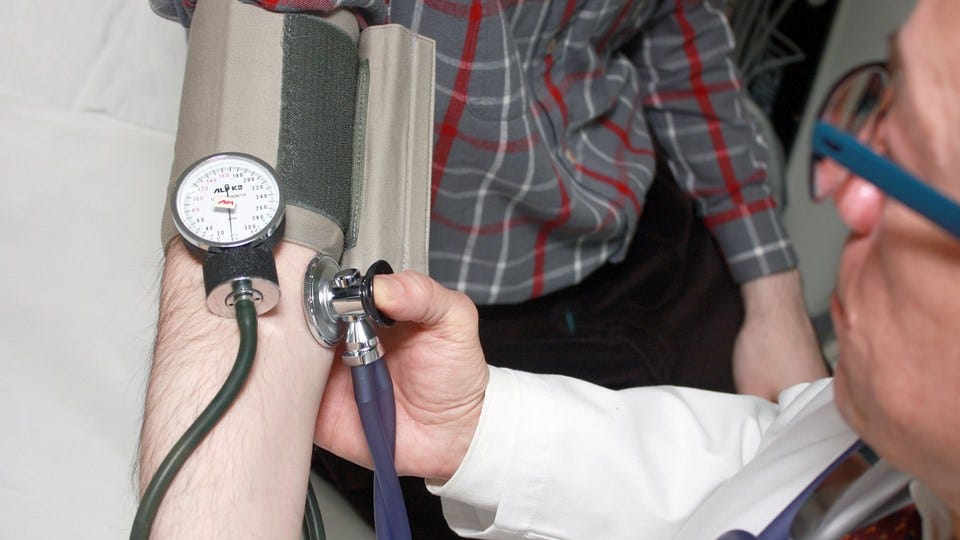Commission: Indiana needs to boost spending to modernize public health system
Subscriber Benefit
As a subscriber you can listen to articles at work, in the car, or while you work out. Subscribe Now
Indiana needs to spend an additional $242 million a year to help improve the state’s strained and fragmented public health system, a blue-ribbon commission recommended Thursday.
The state ranks among the worst in the nation for obesity, smoking, infant mortality and other critical measures, and the life expectancy of Hoosiers has declined in recent years after peaking in 2010, the commission said.
Some of those low rankings could be improved if Indiana increased public funding, which is one of the lowest in the nation on a per-person basis, the report said.
“It’s clear we need to change and improve,” said Luke Kenley, a retired Republican state senator from Noblesville who co-chaired the commission. “…Indiana does not have a poor public health-delivery program due to anyone’s fault. It’s merely a system that came about over many years with little realization of how society would change.”
Gov. Eric Holcomb established the commission last year to examine Indiana’s public health system as the state continues to struggle with some of the highest rates of physical inactivity, immunizations and public health funding in the nation.
One of the top recommendations is to help local health departments, which are often understaffed and have limited resources for school nurses, ambulance service, providing immunizations and collecting health information.
Indiana spends about $55 a person on public health annually, or about $374 million. The money is used for such things as preventing, detecting and tracking disease outbreaks, as well as tobacco cessation programs, emergency preparedness and infant health programs.
That per-person spending ties Indiana with Arizona and Ohio for second-to-last place, according to America’s Health Rankings 2019 report by the United Health Foundation. Only Nevada spends less.
The commission is recommending that the state increase annual public health funding to $91 per person, an increase of about 65%, for an extra $242.6 million a year.
Much of that money would be funneled to local health departments, many of which have bare-bones offices and programs, the commission said.
Some counties have only one ambulance to make emergency runs, said Dr. Kris Box, the state health commissioner, and they sometimes have to ask neighboring health departments for assistance to help with medical emergencies.
“It’s important that they have someone to pick them up and take them to a hospital, someone to stabilize them and get them to a higher level of care if they need it so they do have a chance to survive and not have long-term disabilities,” she said.
The commission prepared a 100-page report with numerous findings and recommendations. Other recommendations include improving access to health screenings at schools, establishing a state strategic stockpile for personal protective equipment, enhancing data analytic tools and resources for local public health, and developing a state health-care workforce plan to deal with clinical and public health worker shortages.
The report said that obesity and diabetes accounts for more than $8.4 billion in productivity losses among employed Hoosiers.
Chronic diseases, such as cancer, lung disease, stroke, diabetes, heart disease and kidney disease, are among the leading causes of death and disability in Indiana, with total direct and indirect costs of $75.5 billion a year, the report said.
Smoking results in nearly $3 billion in annual health care costs for Indiana, including $590 million in Medicaid costs alone.
Life expectancy in Indiana in 2019 was 77 years, nearly two years below the national average of 78.8 years. Hoosier life expectancy peaked in 2010 at 77.5 years.
The 15-member commission will deliver the report to Holcomb, who will decide which recommendations to present to the Legislature. It held seven public hearings to gather information in developing its report.
“We have confidence that if he was willing to establish the commission, then he has some interest in these things,” Kenley said. “Hopefully he will use the hard work that we’ve put in as part of his marshaling force to sell this to the Legislature.”
But the Legislature has sometimes been at odds with Holcomb on public health issues. Last year, state lawmakers passed a bill that would take away the power of local health departments in responding to health emergencies, and would allow local elected officials to overrule orders issued by a city or county health departments. Holcomb vetoed the bill, but the Legislature later overrode the veto.
Holcomb has said the state would not be able to continue performing well economically if it did not begin to do better when it came to public health. Last year, he said the pandemic “exacerbated the need to modernize Indiana’s public health system.”
The Indiana Hospital Association, in a statement, said it supported the commission’s report. “We can no longer tolerate being 45th in the nation in terms of per capita funding,” the organization said. “IHA looks forward to partnering with policymakers to reinvigorate our health care workforce and create a healthier Indiana.”
